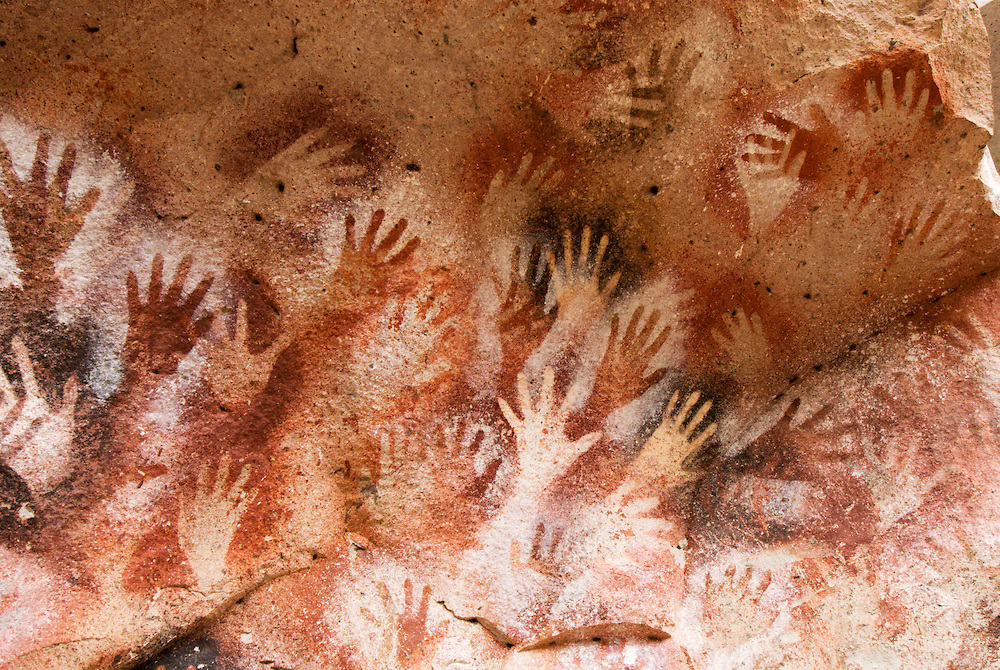In one of the biggest archaeological science breakthroughs of 2016, scientists have discovered a way to identify the handprints of 40,000 year-old prehistoric humans as originally belonging to a male or female with more than 90% accuracy.
Hand stenciling was a popular form of rock art in Argentina, Indonesia and Europe during the Upper Palaeolithic period – about 37,000-40,000 years ago. The art was made by blowing or stippling pigment, such as ochre or charcoal, over a hand held over a rock. The art was created for a number of reasons. Hypotheses floating around the archaeological community say that the hands might have been the signature of artists. Others say the paintings were created as part of some healing or sealing ritual. In truth, we’ll never know why these paintings were created. What we do know now is who made them.
“Archaeologists are interested in hand stencils because they provide a direct, physical connection with an artist living more than 35,000 years ago,” Anthropologist Dr. Emma Nelson, project leader of the newest study on this type of rock art said, “Now, using a new experimental application, results from our study indicate it is possible to determine, with more than 90% accuracy, the sex of someone who lived tens of thousands of years ago, from the shape and size of their hand outline. We have even applied the method to hand stencils where digits are missing – common in Palaeolithic art – something prior studies have not been able to do.”
![Experimental reproduction of ancient cave art via researchers with the University of Liverpool. [PHOTO: popular-archaeology.com]](https://historythings.com/wp-content/uploads/2016/12/31474165612_62d2406a68_b-1024x531.jpg)
Experimental reproduction of ancient cave art via researchers with the University of Liverpool. [PHOTO: popular-archaeology.com]
While previous techniques used finger length and hand size to determine the sex of the artist (or, in some cases, hand model), this hasn’t always been the most effective or accurate technique. The new technique used by Dr. Nelson and her team is called geometric morphometrics, and it uses a map of 2D landmarks to detect sex-based differences in the shape and form of each handprint. These 2D landmarks then pull from historical and modern-day statistics to determine the original shape of the hand that the handprint was created from. This shape can then tell us the sex of the ancient artist.
Dr. Patrick Randolph Quinney, a forensic anthropologist at UCLAN commented, “[The study] revealed that the shape of the palm is actually most indicative of the sex of the individual, rather than the finger size or length.”
The project coordinator, Dr. Anthony Sinclair, added in his statement: “We would encourage other researchers to apply this method to different human populations so we can build a more global understanding of hand variation.”
The study has been a collaborative research project created by student volunteers and researchers from the University of Liverpool, the University of Central Lancashire, and the University of Witwatersrand in South Africa. It was published in the Journal of Archaeological Science on December 13th of this year.


